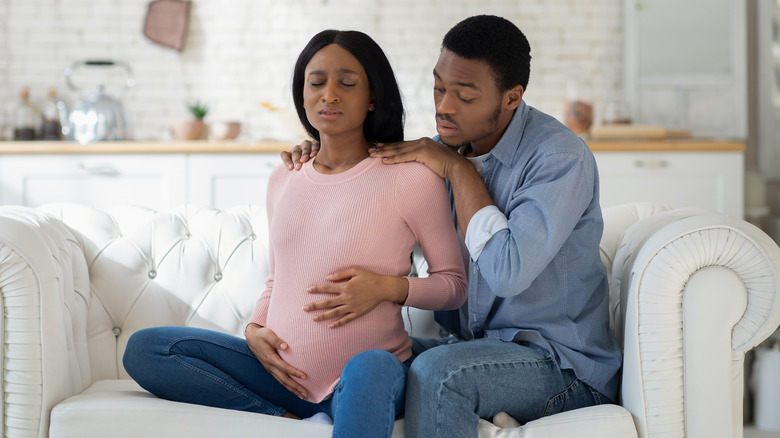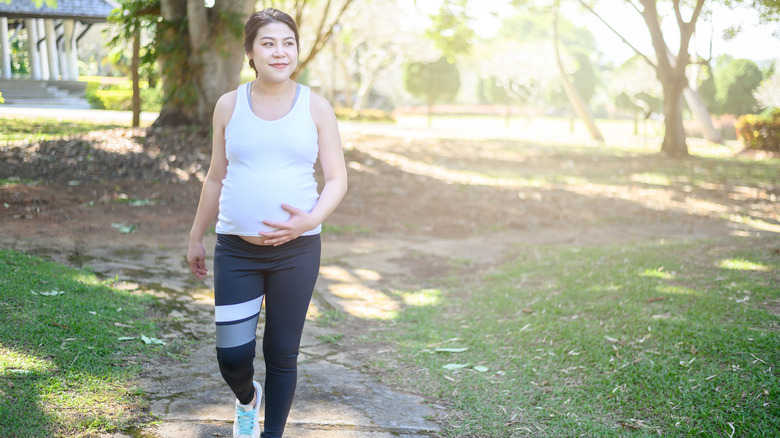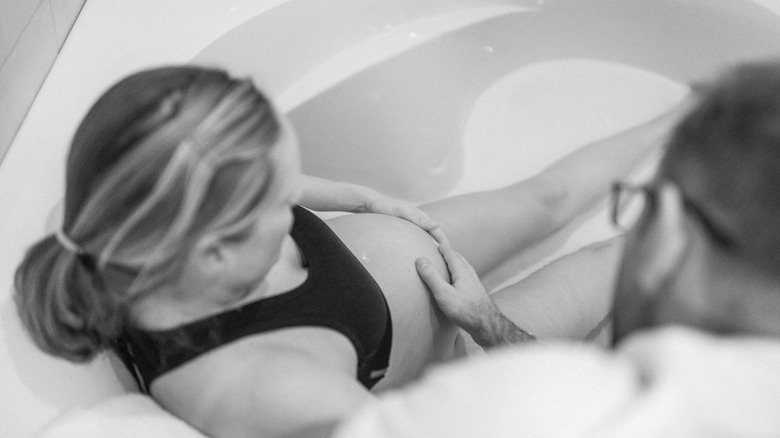How To Ease Discomfort From Braxton Hicks Contractions
While contractions in pregnant women are usually the first indicator that labor has begun and the baby has started their descent down the birth canal, some women experience Braxton-Hicks contractions. These are commonly referred to as "false labor pains" and occur in the months leading up to their due date. Less painful than those that occur during labor, Braxton-Hicks contractions often cause an uncomfortable tightening feeling in the abdomen that lasts for around 30 seconds or so.
Most women experience Braxton-Hicks contractions in the third trimester. However, others might start feeling them as early as the second, according to the American Pregnancy Association. Surprising and strange as they may feel, Braxton-Hicks contractions are completely normal and occur in all pregnancies. While they may go totally unnoticed in some women, others may find them to be unpleasant. If you're in the latter camp, we've got a few easy ways you can relieve the discomfort associated with Braxton-Hicks contractions.
What causes Braxton-Hicks contractions?
Far from being a cause for concern, Braxton-Hicks contractions are actually your body's way of toning the muscles in your uterus in preparation for the laborious task of childbirth (per Mayo Clinic Health System). Some practitioners even believe that these little pangs have the ability to soften and thin the cervix, making it easier for your baby to pass through. What's more, tracking the frequency and severity of the contractions can even prove useful in recognizing when real labor pains have begun.
But beneficial as they may be, Braxton-Hicks contractions can be uncomfortable for some women and they may seek to avoid the unpleasant sensation altogether. To do so, it's important to understand what triggers them. Cleveland Clinic suggests that dehydration, needing to pee, being overly active, and moving something heavy can contribute to the incidence of Braxton-Hicks contractions. Many women also find that the false labor pains begin, or get worse, after engaging in sex. But some of these triggers, like needing to pee, are unavoidable — especially during pregnancy. Heck, having sex with your partner might feel like a necessity sometimes too! So it's important to find ways to ease the discomfort when these contractions rear their pesky little heads.
Tips to ease Braxton-Hicks contractions
In many instances, finding ways to get comfortable during pregnancy requires some creativity. While a heating pad on the tummy and a handful of ibuprofen may be a no-go, there are a few things you can do to ease discomfort associated with Braxton-Hicks that won't put your baby at risk. The American Pregnancy Association suggests that the first thing you can do is change your position. If you've been on your feet, try taking a load off. Conversely, if you've been sitting or laying for a long time, you might take yourself out for a walk. Because dehydration is also a trigger, drinking a couple of glasses of water or a mug of herbal tea can do wonders to quell the tension.
Most experts advise against a piping hot bath during pregnancy, as temperatures over 98 degrees can be distressing to the baby (per WebMD). However, a warm bath is considered A-OK and can be a great treatment option for Braxton-Hicks contractions. Not only will it help you relax, but the warm water can also relieve any muscle tension that might be causing you pain. After your bath, Mayo Clinic Health System recommends practicing some breathing exercises and recruiting your partner to give you a gentle massage.



